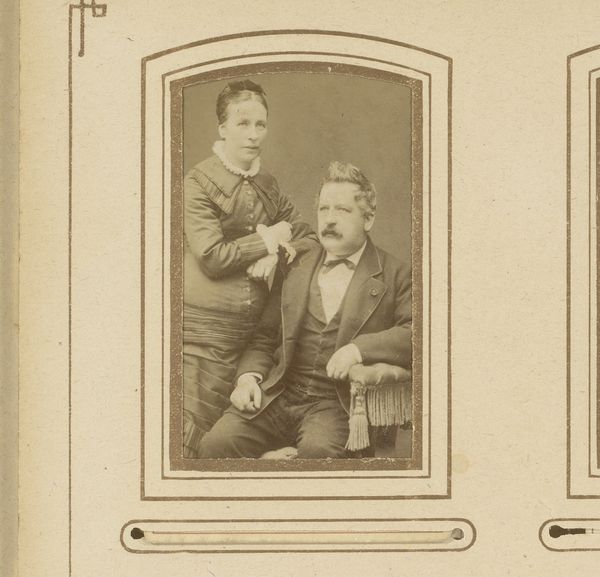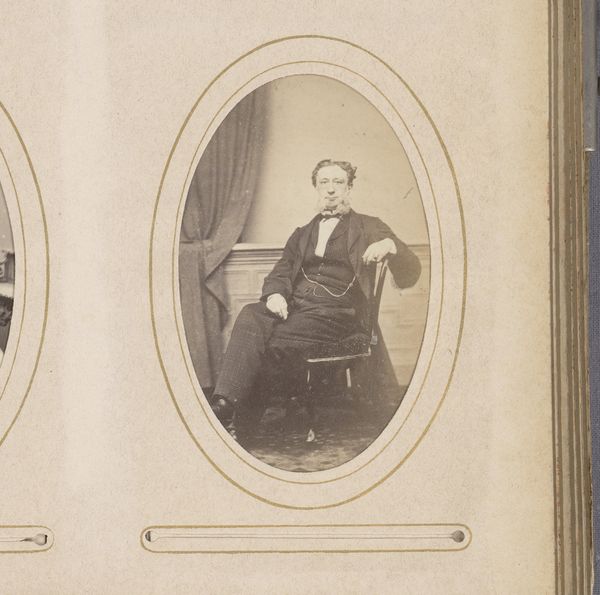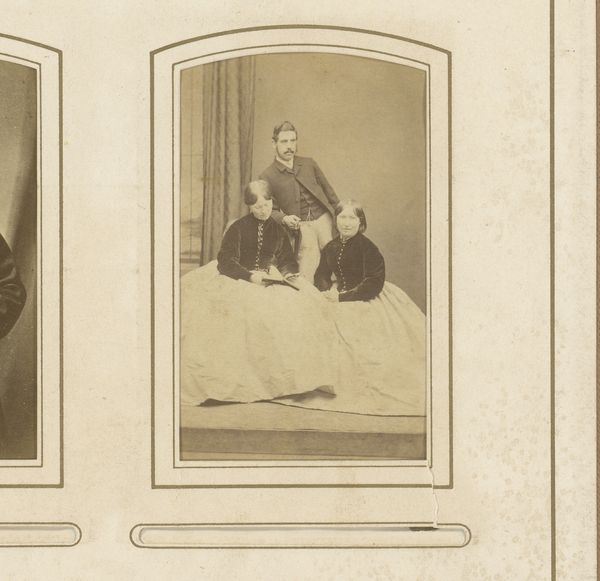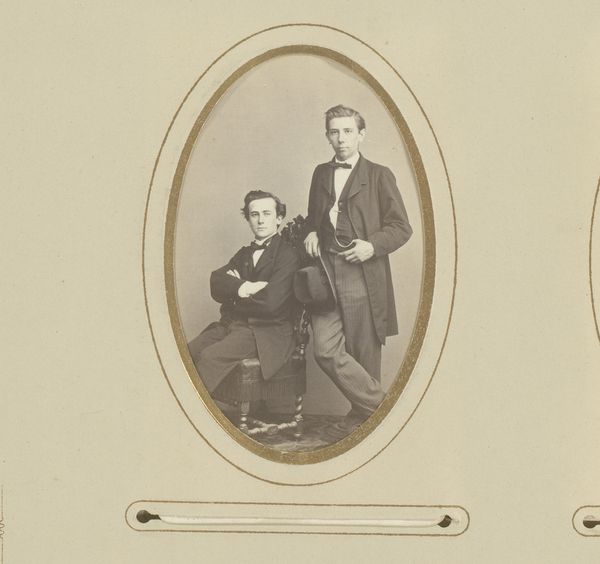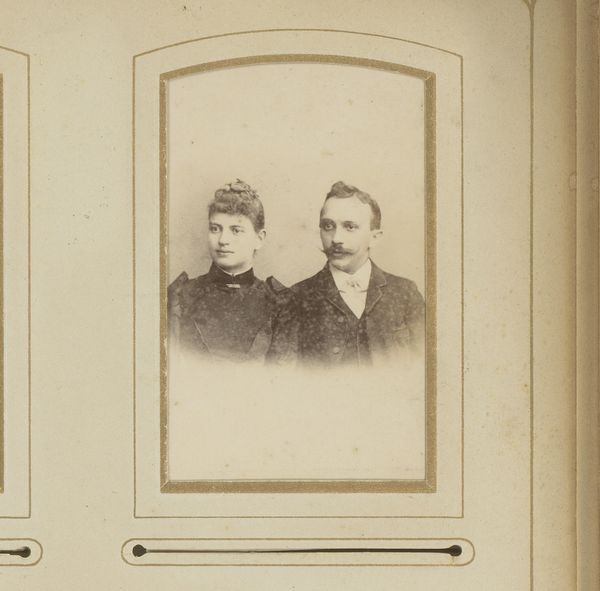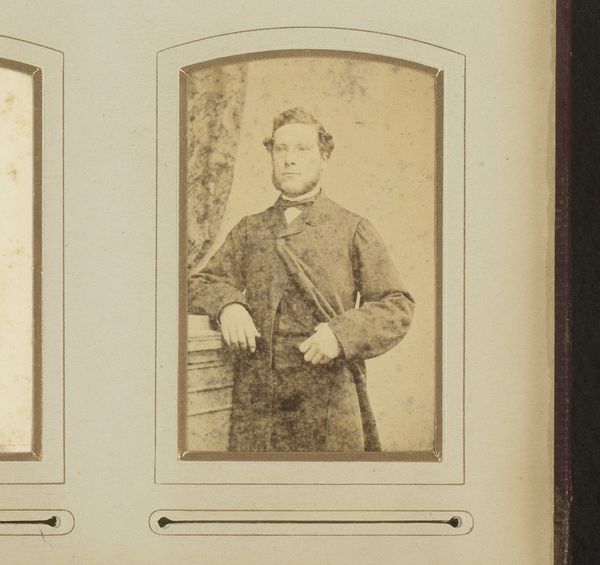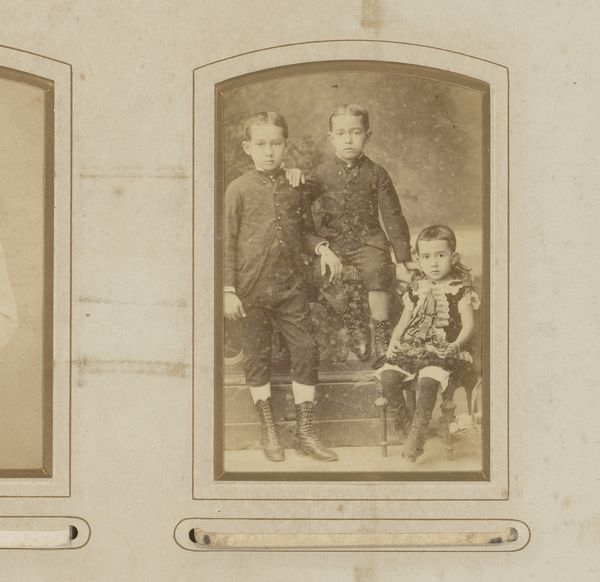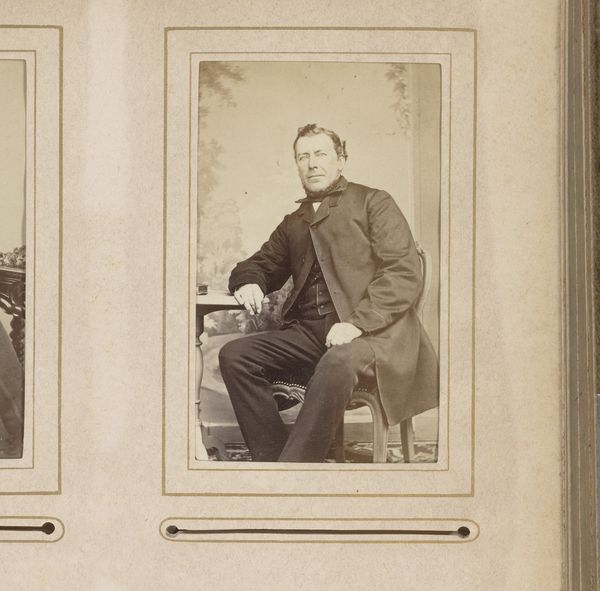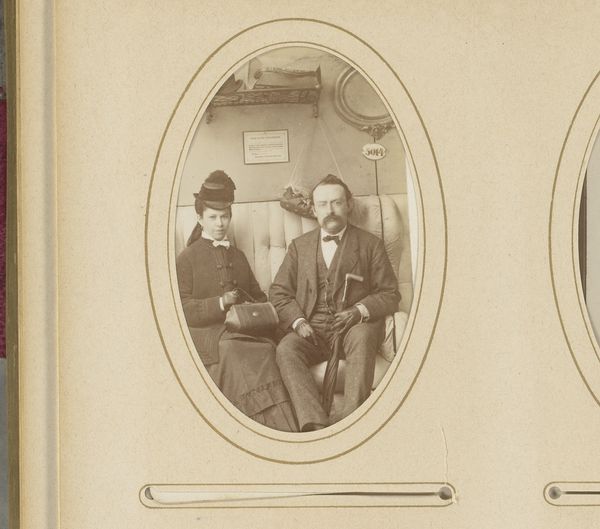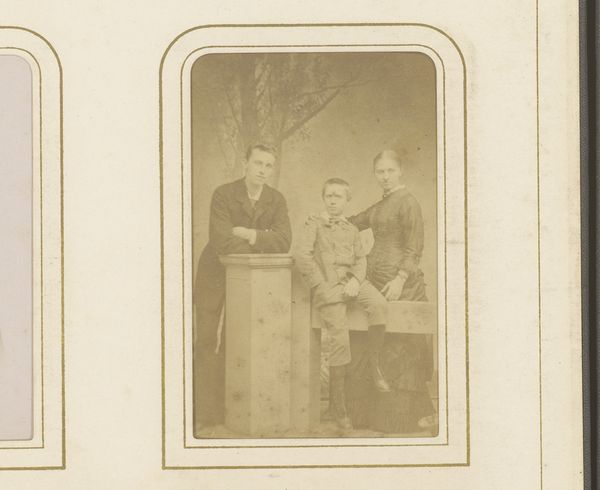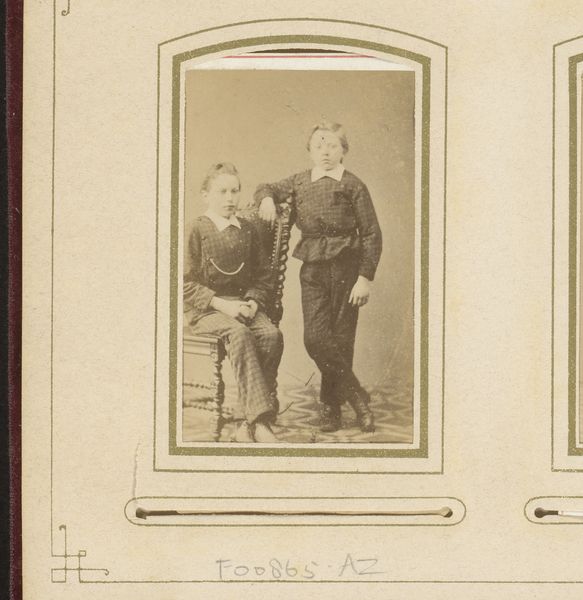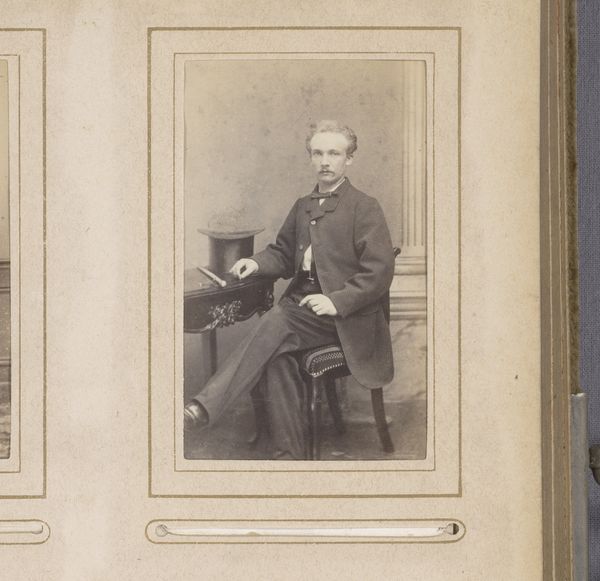
#
beige
#
aged paper
#
toned paper
#
earth tone
#
parchment
#
brown and beige
#
warm toned
#
warm-toned
#
neutral brown palette
#
golden font
Dimensions: height 84 mm, width 51 mm
Copyright: Rijks Museum: Open Domain
Editor: Here we have an interesting albumen print from between 1871 and 1893 by Ed. Radermacher, titled "Portret van een zittende man en een staande vrouw," or "Portrait of a Seated Man and a Standing Woman." The neutral brown palette and somewhat faded quality give it a certain gravity. What elements stand out to you from a formalist perspective? Curator: Note how the composition orchestrates a visual tension between stillness and potential movement. The seated man, his form solid and contained, anchors the image. Contrast this with the woman; her verticality and slight lean suggest a readiness, a counter-balance to his groundedness. Editor: It's interesting how their poses create a dialogue. How does the interplay of light and shadow contribute? Curator: Observe how Radermacher employs light to model their forms, but without extreme chiaroscuro. The even illumination subtly softens contours, lending a degree of universality, moving it away from individualistic portraiture towards type. It becomes an exercise in photographic form itself, a record of light’s interaction with chemical compounds and textured paper. Consider also the rectangle within a rectangle created by the framing and the subject’s placement. It further formalizes the image and directs your focus to them. Editor: It is also like a memento, of an elegant kind, but certainly cold and rather static in feeling? I hadn’t thought about that stillness as deliberate before. Curator: Indeed, the stillness underscores photography's capacity to arrest time, but more importantly, it directs our gaze toward its formal and material elements. We can admire the composition itself, its tonal relationships and formal balance and tension. It moves us away from anecdote to a consideration of form. Editor: I’m seeing this in a completely new light. I see the interplay between the individuals and their framing environment. I realize the power of stillness here! Curator: Exactly. And in attending to this level of detail, we recognize the aesthetic possibilities inherent in the photograph’s visual mechanics.
Comments
No comments
Be the first to comment and join the conversation on the ultimate creative platform.
